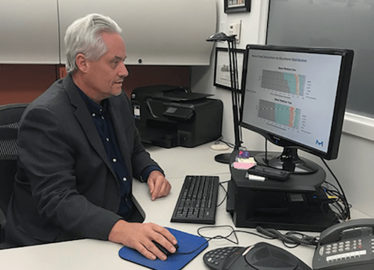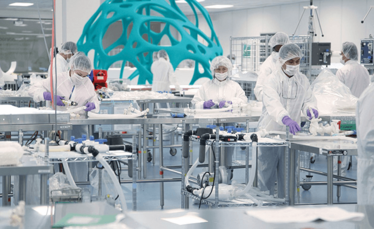A Media Match Made in Heaven
When it comes to a good cell culture media, biopharma manufacturers desire a chemically defined formula, controlled variance and, increasingly, a specific protein quality profile.
Cell culture media consistency is crucial when trying to avoid unnecessary introduction of variability in protein production. Over the last five years, customers have been coming to MilliporeSigma in the search for chemically-defined cell culture media; they want us, as the manufacturer, to not only understand every chemical within our formulas but also what impact they could have on production processes. It’s no small task given that cell culture media has evolved from using serum, cell proteins and hydrolysates – all of which have undefined characteristics that can result in variation.
However, cell culture media have advanced significantly in the last two decades and now, despite the challenges, we at MilliporeSigma are reaching a point where we understand every single chemical included in our formulas and where we can control variability within specific ranges.

In previous articles in this series (1)(2), Chandana Sharma summarized how the raw material characterization team at MilliporeSigma was formed to ensure that our raw materials are as pure and as well understood as possible. From my perspective, I need to know that our cell culture media will never be a factor that causes issues with a customer’s process. When our cell culture media cause a shift in protein quality, it should not be accidental – we want to elicit the shift by design.
As well as ensuring that trace elements and impurities are controlled in our media, we need to balance the ratio of raw materials so that a given formula has everything the customer needs to produce their protein. I have been working with cell culture at Sigma Aldrich – now part of MilliporeSigma – for 26 years. My current role involves working with customers to develop cell culture media formulas that enable them to produce proteins with the right quality profile.
Traditionally, customers have prioritized high protein productivity, but today we find that greater attention is paid to quality, with customers often seeking a particular N-glycan profile, a particular charge, and so on. Meeting a very specific protein profile is particularly crucial for manufacturers of biosimilars, who must copy the innovator product as closely as possible. Depending on what the innovator molecule is, this task could be easy or extremely difficult. But you can probably guess that, as molecules become more complex, we’re often working at the “extremely difficult” end of the spectrum. Sometimes there are also intellectual property considerations to contend with; some innovators patent certain methods to perform specific protein quality manipulations.
Success by design
It is impossible for us to supply an effective cell culture medium, if a customer has not identified the endpoints and critical quality attributes, so we target these during development to ensure that we can deliver what the customer actually wants. There is a seemingly unending list of protein modifications that can be inferred by a customized cell culture medium. Whereas finding the right formula was traditionally performed by trial and error, today we use modeling and chemically defined libraries to perform media screens. For example, if we were working to find a medium for a fed-batch process, we would perform media screens and feed screens, and then use a mathematical approach – multi-variate analysis – to draw correlations between single components, formulas, and the responses we want to see in terms of protein quality. In this way, we can see what is positively or negatively affecting a system, and then do more design of experiments to closely look at the ranges of those particular components to achieve the desired protein profile.
It makes much more sense to use a mathematical approach because, at the outset, you may have 70 components in a formula that would otherwise need to be “tweaked” through trial and error, wasting substantial resources. Screening helps identify the main components – let’s say 15 – that need to be interrogated further to ensure they don’t give any off-target effects.
How the media is put together depends on whether it’s a fed-batch or perfusion process. Perfusion systems are being increasingly adopted, but there are not a lot of good scale-down models, which is a challenge. In fed-batch mode, 96 well plates or TPP tubes can be used to perform experiments under many different conditions. There isn’t really a comparable system for perfusion right now, although we are reviewing alternatives, and there are still limitations in the number of conditions that can be run. We are looking at even smaller systems, which will ultimately change our workflows. The end goal is to be faster and as scientifically directed as possible.
Sometimes the actual amount of protein that is produced and the quality attributes move in opposite directions – with quality decreasing as productivity increases. In that case, we discuss the options with the customer – and most choose quality over quantity. If all of the customer’s requirements cannot be achieved via a nutritional fix, the problem likely stems from the genetics of the cell line, which may not have the range of responses needed. In the unlikely event that we can’t meet a customer’s requirements, they may be able to further influence protein quality on the process side, using temperature or pH shifts, or a varied feed schedule. In any case, the customer will always end up with a chemically defined medium with controlled variability that is free of animal components.

Improved matchmaking
Our knowledge of cell culture media has led us to launch a number of commercial products. For example, Ex-Cell Glycosylation Adjust (GAL+) is a supplement that allows users to manipulate N-linked glycosylation by increasing sugar attachment. We are also developing a GAL-, which, as the name suggests, does the opposite by decreasing sugar attachment. We are constantly assessing other protein quality parameters and will release new commercial products to help customers whenever we can.
We continue to develop and improve our formulas as our knowledge base grows. For example, tyrosines and cysteines are important nutritional elements, particularly for CHO lines, but can suffer from solubility issues, so we’ve been developing novel forms with higher solubility characteristics and improved liquid-form stability. Other amino acids and vitamins suffer from similar problems.
Finally, I must say that raw materials will always have some level of variability – the key is to ensure that any variability is well understood and controlled as tightly as possible. With an upward trend in quality, as well as calls for more supply chain transparency, cell culture media consistency will become an increasingly important topic.
Bruce Lehr is Director, Upstream R&D, Cell Culture, at MilliporeSigma.

- C Sharma, “Chasing Traces,” The Medicine Maker, 34 (2017). Available at: bit.ly/2hATxvc
- C Sharma, “Know Thy Raw Materials,” The Medicine Maker, 33 (2017). Available at: bit.ly/2xnRFLi
Bruce Lehr is Director, Upstream R&D, Cell Culture, at Merck KGaA.



















